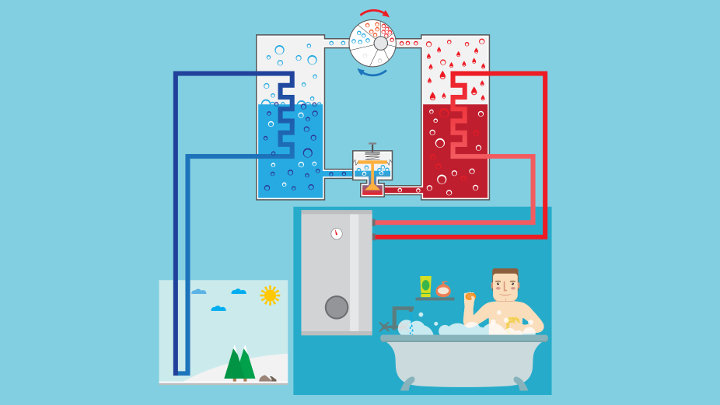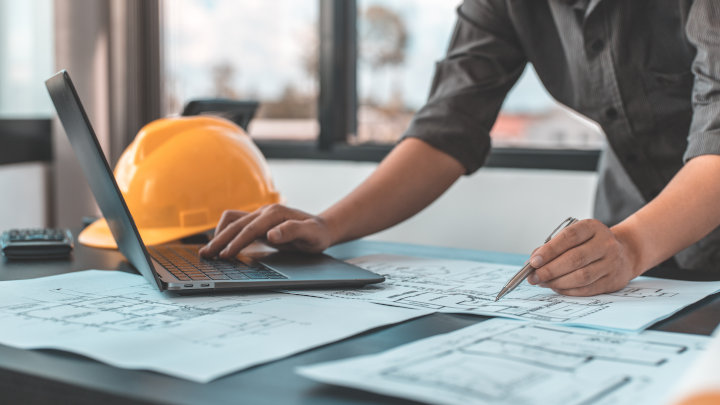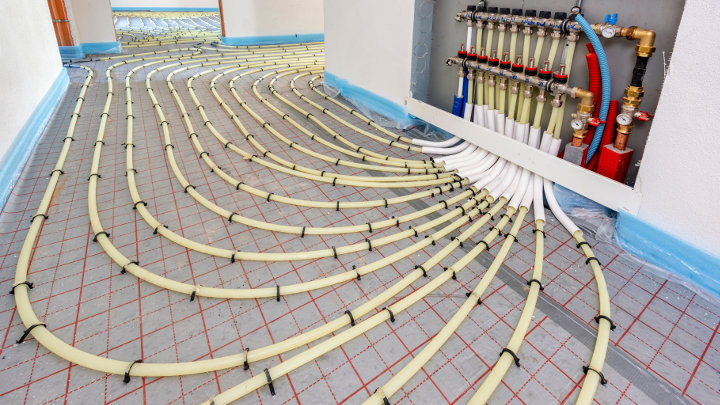
- 16-11-2023
- Joris Bracke
- 0 Comments
Discussions about whether or not to install a heat pump are taking place on various media. Houses pop up with good experiences circulate, but bad experiences such as high electricity bills can also be revealed. Is a heat pump also interesting in a renovation? What should I pay attention to when requesting quotes? Here, we discuss some do’s and don’ts when considering a heat pump.
New homes
When applying for a building permit, there are inevitably energy requirements that the new house must meet. To lower the EPC rating, the heat pump is a great help. On the other hand, different experiences circulate regarding electricity consumption. What are the do’s when choosing a heat pump?
- Limit the heat demand: a heat pump is only really interesting in homes with a high degree of insulation.
- Low temperature heating: use under floor heating as much as possible to distribute the heat in the house at the lowest possible temperature. Proper dimensioning and heat loss calculation is essential to keep the temperature as low as possible and still obtain sufficient heat during winter.
- A heat loss calculation pays off: this way you can check if there is enough heat emission to compensate the heat loss.
- Good commissioning pays off: agree with the installer that he adjusts the system properly. We regularly see the need to make several adjustments in order to obtain an optimally functioning system.
-
Consider different systems and types:
- Examine what the best system is (price-quality) for your home: air- or ground source.
- Each system has its own advantages and disadvantages.
- Compare efficiency, price and space requirements in a technical storage room or outside.
- Compare the noise production of the systems: an air source heat pump has an outdoor unit that can cause noise nuisance (for neighbours).
- Ask which additional facilities are required (power and connection to the electrical grid, condensate drains, etc.).
- Will the heat pump cause additional electricity consumption? Yes, the heat pump will inevitably consume electricity (regardless of the type), although this is limited if the system is properly adjusted.
- You can limit this extra consumption by installing (extra) solar panels (PV panels). In this way, you can also use your own electricity without burdening the public grid with PV-revenues.
- Create sufficient space for the installation: installations and systems are often larger than expected and proper maintenance requires the necessary space (disassembly).
Of course, there are also don’ts and the necessary pitfalls:
- Avoid electrical resistors as much as possible, unless they are really necessary. Often, elements for electric resistance heating or auxiliary heating are placed in the heat pump or in the buffer/storage tank. These will only consume power to generate heat at times when the heat pump cannot handle it. For hot water production and storage, supplementary heating is sometimes unavoidable to avoid legionella. In winter (when there is little heat in the air) an air source heat pump often needs an electric additional heater to still supply the required power.
- Avoid external storage tanks: an external storage tank stores hot water for domestic use (e.g. shower). This hot water inevitably cools down and must always be reheated. This can lead to additional and/or unnecessary consumption.
- Ecolabels do not say it all: never limit a comparison to the Ecolabels alone. A thorough comparison of a complete system (appliance with storage/buffer vessels with pumps with release via underfloor heating or radiators instead of only one device) will give a more correct comparison or reveal points of interest.
- Avoid noise by never installing pumps and installations in the house against a wall behind which a utility room (bedroom, living room, study) is located.
Renovation
A heat pump can also be a great advantage in a renovation, but there are additional points of interest:
- Sufficient capacity: A heat pump is less interesting in a poorly insulated house. On the one hand, because it is not possible to heat at low temperature to obtain sufficient thermal comfort and, on the other hand, because a heat pump alone may not produce enough heat to heat the whole house. A heat loss calculation will quickly reveal this.
Insufficient power can be solved by combining the heat pump with electrical resistance heating (but this may lead to higher electricity consumption) or an extra connection to a condensing gas boiler that provides auxiliary heating when the heat pump cannot provide enough power. There are also hybrid heat pumps that combine various systems in a single device. - Cold radiation: In a limited renovation, non-insulated walls or roofs or windows may be preserved. These can cause cold radiation to the occupant, something that cannot easily be compensated for with underfloor heating. Additional radiators at a higher temperature are often required. A good dimensioning is then recommended.
Additionally, when combining a renovation with a heat pump, it is advisable to also:
- Ensure thorough insulation where possible.
- Heat at low temperature.
- Include underfloor heating or a low temperature heat delivery system in a renovation for future use with a heat pump.
- Allow for a connection to PV panels (to compensate the electricity consumption yourself).
Comments
No comments yet.







Make a comment